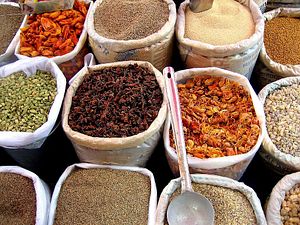India’s Prime Minister Narendra Modi recently visited Qatar. There, he advocated for more trade between India and Qatar and pressed for an improvement of Qatar’s labor conditions. Much of Qatar’s working force consists of labor from India and other South Asian countries; at least 630,000 of Qatar’s 2 million inhabitants come from India. Conditions for these workers are generally described as in need of improvement.
India has historically had close economic ties to the Arabian peninsula, especially the Gulf region along its eastern shores.
The first historically recorded maritime trade route in the world was, in fact, between the Indus Valley Civilization and the civilization of Dilmun, which was located on the island of Bahrain and the adjacent shore of Saudi Arabia. By 2000 BCE, Dilmun acquired a monopoly on trade between the Indian subcontinent and the civilizations of Mesopotamia. Records and historical artifacts demonstrate that traders from Dilmun stayed for extended periods in South Asia and vice versa. Goods not available in the Middle East, including cotton and spices, were acquired by merchants from Dilmun.
Later on, trade between India and the Arabian peninsula was mostly dominated by Arab traders from Yemen and Oman. In Roman times, Yemen was the conduit for some highly valued types of incense, both natively sourced and traded from India. At the same time, Oman was dominating the Indian Ocean trade between India, the Middle East, and East Africa. By the end of the first millennium CE, trade between India and Arabia became the economic backbone of the Arabian peninsula.
Interestingly, most goods flowed from India toward Arabia. The latter had little to export to India except the money that was used to purchase spices, cloth, and other goods found in India. One exception to this rule, however, was the pearl industry, which was the single most important export of the Gulf region until the discovery of oil. Pearl diving was a way of life in places like Abu Dhabi, Dubai, and Qatar.
Relations between the Gulf region and India grew even stronger during the British Raj, when they acquired a strategic-military component in addition to an economic one. By the mid-19th century, the British had come to dominate the subcontinent. British influence and control over Arab territory mostly flowed as a consequence of British needs to protect sea lanes. The British established a protectorate over Abu Dhabi in 1820, and conquered Aden in 1839, which was administered as a province of the British India. Later on, protectorates were established over Oman, Qatar, Kuwait, Bahrain, Dubai, and the other states that would later make up the United Arab Emirates (UAE). British affairs in Gulf Arab states were all administered by British officials in India, and were garrisoned mostly by Indian soldiers under British command.
The relationship between India and the Gulf states began to reverse upon the discovery of oil and Indian independence. The balance of trade began to shift more in favor of the Gulf states who exported oil. Today, India imports over 80 percent of its oil from the Gulf region (including Iran). Additionally, independent India failed to tie the Gulf states economically to it in the way the British did. The Gulf states used the Indian Rupee as currency, which was pegged to the British pound at India’s independence. However, in 1959, India introduced a separate currency, the Gulf Rupee, for the Gulf states. When the Rupee was devalued in 1966, the Gulf states introduced their own currencies, with Oman being the last to do so in 1970.
Yet, despite this and India’s inward economic turn post-independence, India still maintained important relations with the Gulf region relative to other regions. By the 21st century, India was exporting more to the Gulf region than the European Union (EU). For example, in the “2012-13 financial year, India exported $51 billion to the GCC, mostly food, garments, jewellery and petrochemicals,” according to the Financial Times. About 15 percent of India’s exports go to the Gulf. India was also Dubai’s largest trade partner until 2013, when China overtook it.
India retains strong ties to the Gulf region today. Its food industry is competitive because its large Muslim population exports a lot of halal products, giving it a head start over China, which is trying to now get into the halal export business. There are over 7 million Indians working in the Gulf and many Indian companies are active in sectors like construction and technology. Bollywood is enormously popular among both expats and native Arabs in the Gulf.
As a result of these trends, as I have argued previously, India should pay particular attention to the Middle East, and the Gulf region in particular. It has strong ties to the region, including historical and cultural connections which give it a leg up over its regional economic and military rivals–something that cannot necessarily be said for Southeast Asia, for example. The fascinating history of Indo-Gulf relations, the oldest maritime trade relationship in the world, continues today. Moves by the Indian government to shore up and expand these relations can only be welcomed by all parties involved as well as the West.

































